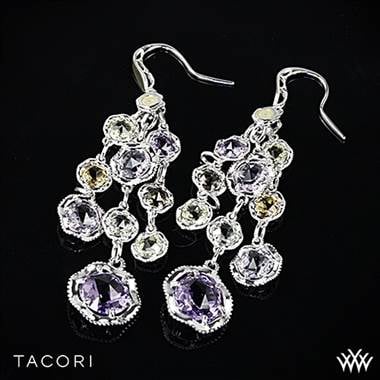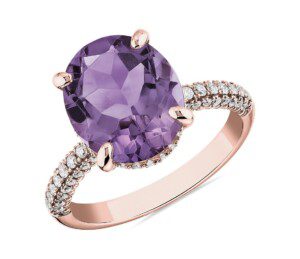How Are Diamonds Made? Natural vs Lab-Created Explained
Two Paths, One Diamond Not all diamonds come from the same place — but they all start the same way. Pure carbon, crystalized under immense pressure and heat. Whether it…
If you are a February baby, your birthstone is Amethyst – a purple to violet color quartz. The word “amethyst” comes from the Hellenistic Greek “amethystos”, which translates simply as “not intoxicate” – so it’s no surprise that the ancient Greeks wore the stone and decorated drinking vessels with it in the belief that it would prevent drunkenness! Its violet to deep purple hues can be cut into many different shapes and sizes. There are large deposits of amethyst found in Brazil, Zambia, Australia, and popular small deposits found in the United States and Russia. Even though amethysts are found in large quantities, the gemstone is also manufactured in laboratories. Historically, amethyst can be found in the jewelry collections of royalty and clergymen throughout Europe and Asia. Happily, today it’s within reach of most middle-class consumers.
Amethyst is a bright colorful birthstone and is referred to as the purple to violet color of quartz.
As a variety of quartz, it shares similar characteristics to other gemstones such as asper, chalcedony, agate, citrine, and ametrine.

Amethyst has a relatively high hardness of 7 on the Mohs scale. Amethyst can be used in rings, earrings, necklaces, and bracelets for everyday use.
As mentioned, there are large deposits of amethyst found in Brazil, Zambia, and Australia. Two mines that are world-renowned for producing some of the world’s finest stones include Siberia and the Four Peaks mine located at Arizona Boardwalk. Siberian amethysts have deep, rich purple colors with flashes of red and blue. Traditionally, amethysts with this rare coloration have received the highest values. Whereas, amethyst crystals from the Four Peaks mine display a typical morphology for amethyst, consisting mainly of rhombohedral faces. Facetable material varies from light to dark purple, and generally, only small portions of the crystals are suitable for faceting.
If you’re a February baby but purple isn’t your color – you’re in luck. In the lighter violet colors, you can often get more of a blue or red stone. The other option for you is ametrine, which is a combination of amethyst and citrine with the purple of the amethyst and the yellow-gold of the citrine.

Amethyst jewelry has been found as far back as 2000 BC, popular amongst royalty and clergymen – not surprising, since purple has been the color of royalty. Amethyst was frequently used in regalia including crowns and scepters.

Throughout most of history, amethysts were as rare and as expensive as sapphires, emeralds, and rubies. It wasn’t until the late 1800s, when a large amethyst deposit was discovered in Brazil, that the gemstone became more affordable.
Many cultures associate amethyst with peace, courage, and stability. Crystal practitioners believe that amethyst enhances meditation. Tibetan monks use amethyst beads in meditation malas. Amethyst is also the traditional wedding anniversary gift for the 6th and 17th years of marriage.
Amethyst jewelry can be cleaned using two methods: using an ultrasonic cleaner or a soft brush with mild soap. Steam cleaning is not recommended.
If you’re shopping for the February birthstone, you’ll probably also encounter lab-grown amethyst. Synthetic amethyst has the same chemical and physical properties as its natural counterpart. In most cases, it is very difficult to distinguish natural from synthetic amethysts without advanced gemological testing.



Go to Amethyst (For those with a Passion for Purple)
Go to Value of Amethyst
Go to Opinion on Amethyst
Are you a February baby? Do you own amethyst jewelry? What is your favorite thing about amethysts? Share by clicking the comments button below!
Written by Bianca Mac Donald